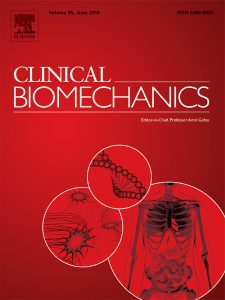Publications

Short-time recovery skeletal muscle from dexamethasone-induced atrophy and weakness in old female rats
Authors: Karin Alev 1, Maire Aru 2, Arved Vain 3, Ando Pehme 1, Priit Kaasik 1, Teet Seene 1
Affiliations:
- Institute of Sport Sciences and Physiotherapy, Faculty of Medicine University of Tartu, Estonia
- Clinical Research Centre University of Tartu, Estonia
- Training Centre of Medical Physics and Biomedical Engineering, Faculty of Science and Technology University Tartu, Estonia
Journal: Clinical Biomechanics - December 2022, Volume 100, Article no. 105808 (DOI: 10.1016/j.clinbiomech.2022.105808)
-
Field & Applications:
- Medical
- Treatment evaluation
- Musculoskeletal disorder
- Animal studies
- MyotonPRO provides a reliable and sensitive way for objective and non-invasive digital palpation of superficial skeletal muscles.
Background: Several pathological conditions (atrophy, dystrophy, spasticity, inflammation) can change muscle biomechanical parameters. Our previous works have shown that dexamethasone treatment changes skeletal muscle tone, stiffness, elasticity. Exercise training may oppose the side effects observed during dexamethasone treatment. The purpose of this study was to examine the changes in biomechanical parameters (tone, stiffness, elasticity) of skeletal muscle occurring during dexamethasone treatment and subsequent short-time recovery from glucocorticoid-induced muscle atrophy and weakness, as well as the effect of mild therapeutic exercise.
Methods: 17 old female rats, aged 22 months were used in this study. The hand-held and non-invasive device (MyotonPRO, Myoton Ltd., Tallinn, Estonia) was used to study changes in biomechanical properties of muscle. Additionally, body and muscle mass, hind limb grip strength were assessed.
Findings: Results showed that dexamethasone treatment alters muscle tone, stiffness and elasticity. During 20-day recovery period all measured parameters gradually improved towards the average baseline, however, remaining significantly lower than these values. The body and muscle mass, hind limb grip strength of the rats decreased considerably in the groups that received glucocorticoids. After 20 days of recovery, hind limb grip strength of the animals was slightly lower than the baseline value and mild therapeutic exercise had a slight but not significant effect on hind limb grip strength. Biomechanical parameters improved during the recovery period, but only dynamic stiffness and decrement retuned to baseline value.
Interpretation: The study results show that monitoring muscle biomechanical parameters allows to assess the recovery of atrophied muscle from steroid myopathy.
Keywords: glucocorticoids, myopathy, muscle tone, muscle stiffness, muscle elasticity
It is concluded that all evaluated parameters altered in rats by DEX administration were not completely restored after 20 days since DEX discontinuation. The present study demonstrated that 20-day free movement in cage and mild therapeutic exercise were not sufficient for reversing steroid myopathy in rats. According to the results of the present study this period is too short for full recovery of the evaluated parameters, and mild therapeutic exercise carried out after interruption of DEX was insufficient for reversing the GC-induced atrophy.
The biomechanical parameters assessment clearly and easily indicated the direction and magnitude of change in muscle tissue after DEX administration and can be useful for detecting and tracking recovery from GC-induced myopathy.


